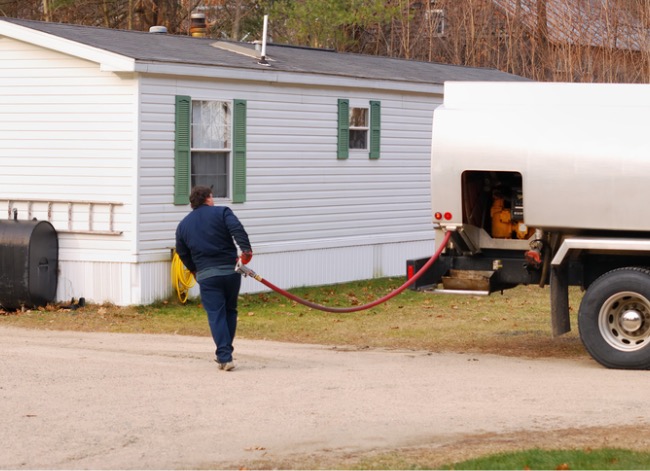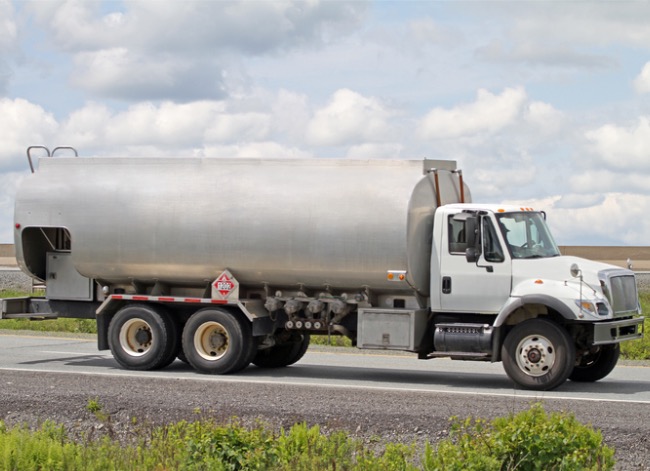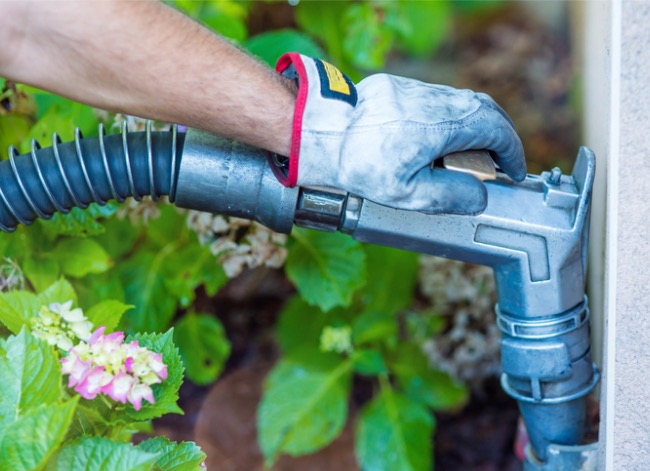

We may earn revenue from the products available on this page and participate in affiliate programs. Learn More ›
Q: My family lives in a house with oil heating, and we’ve just received our oil delivery contract for the coming year. Should we sign up for the budget billing? Should we lock in a price for the year, or go with the fluctuating market price? Help! We appreciate any advice you can give us about getting the best and most convenient deal and service.
A: The reality of oil prices is that they can change at any point, but past oil price records make it possible to track market trends and find the best time of the year on average to purchase and schedule home heating oil delivery. Heating oil delivery companies may offer reduced heating oil delivery prices for a monthly plan, but it’s important to distinguish between a yearly prepaid plan that can cost you more and a price-capped monthly plan that’s made for saving customers money. You may prefer to skip a plan altogether, in which case you will need to invest in heating oil during the summer months between April and September to get the lowest heating oil delivery near your home.
The cheapest time to schedule a heating oil delivery is during the summer.
The cost of heating oil and heating oil delivery depends on the time of year and the location of nearby home heating oil delivery companies. This is because the cost of oil fluctuates throughout the year as the demand for oil increases or decreases. When demand is low, the price of heating oil drops, making the summer the best time to get oil for a reduced cost. Specifically, oil is generally cheapest between April and September.
During the summer months, most people don’t need to heat their homes. If they’re not burning heating oil, people aren’t calling their heating oil delivery company to top up their tank. When the weather starts to get cold, however, the demand for heating oil increases, with some people spending extra for 24-hour heating oil delivery or even same-day heating oil delivery. You can avoid the rush by getting your heating oil in the summer. Because heating oil can last from 1.5 to 2 years, it may be worthwhile to consider upgrading to a heating oil tank that can hold a year’s worth of oil so that you need a heating oil delivery just once per year.

Monthly heating oil delivery packages can save you 3 to 5 percent and ensure your tank is never empty.
A heating oil delivery company will often have several different options for ordering heating oil, including a pay-per-delivery option, a yearly prepaid heating oil plan, and a price-capped monthly heating oil delivery plan. The pay-per-delivery option gives the user full control over when they schedule and pay for a heating oil delivery, but people sometimes forget that they need a top-up, resulting in an emergency delivery.
Yearly prepaid plans charge the user for the estimated amount of heating oil that they would typically use throughout the year. This option may end up costing more than simply scheduling individual deliveries as needed. A price-capped monthly plan, on the other hand, offers customers the best of both worlds, with an automatically scheduled delivery that can save between 3 and 5 percent of the yearly heating oil delivery cost. In this type of plan, the cost per gallon cannot exceed the price cap, but it can drop below the cap. So you will never pay more than the capped price, but you do have the potential to pay less.
The heating oil tank should typically be refilled anytime it reaches about one-quarter full. This ensures that you don’t run out of heating oil and that the impurities that gather at the bottom of the tank don’t get pumped through the system. To help avoid having to pay for an emergency heating oil delivery to keep the home warm, it may be a good idea to invest in a price-capped monthly delivery plan. Note, however, that heating oil providers usually charge a fee for this option.

Homeowners who do not opt for scheduled heating oil delivery services should call for delivery on a Monday, when prices tend to be the lowest.
The price of heating oil fluctuates with the market. As already noted, there are large seasonal changes in price, but there are also daily changes triggered by demand throughout the week. Heating oil prices are linked to the price of gasoline and crude oil, which is most expensive at the end of the week and through the weekend. Prices drop during the beginning of the week, when most people are simply commuting to work or working from home.
Because heating oil prices are generally lower earlier in the week, homeowners who want the freedom to order heating oil as needed should call for delivery on Monday, except in Hawaii, where the lowest price is typically on Wednesday. Of course, most homes in Hawaii don’t need to rely on heating oil, so heating oil demand isn’t as much of a concern.
Related: This Common Home Heating Hack Will Waste More Energy (and Money!) Than it Saves
Even though the prices for heating oil delivery are lower during the summer, you can never be 100 percent sure.
The general trend is that heating oil prices fall during the summer months when demand is significantly reduced as people turn off the heat and switch on the air conditioners. However, just because heating oil prices trend lower in summer, don’t assume that your local heating oil delivery company will follow that trend, or that there won’t be an unexpected fluctuation in the market that could impact the supply of heating oil, thereby increasing the price even when demand is low.
With this in mind, it’s important to check with multiple heating oil delivery companies and to always take the time to look into suspiciously high heating oil delivery costs during the summer months. If you simply assume that the price will be lower, you may accidentally agree to a high-priced delivery, which could be a shock to the bank account.

Keep in mind that having more air than fuel in the tank can lead to condensation, which you want to avoid.
One of the most important reasons to keep the heating oil tank topped up is to prevent condensation from forming inside the tank. Condensation forms when there is a significant temperature difference between the ambient air and the air inside the tank. The warm air inside the tank condenses on the cooler metal, forming water on the interior surfaces that can lead to unplanned downtime and equipment failure as it mixes with the heating oil.
To avoid this situation, keep the tank topped up, ensure that it’s in a shady location, and make certain it’s equipped with a fuel filter to help remove water and dirt from the tank. If the tank isn’t in a shady location, consider painting it white to reduce the effects of the heat from the sun. It’s also advisable to fill the tank at the end of the day in order to normalize the fuel temperatures and reduce condensation formation during the night.
